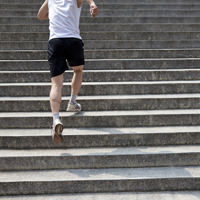Your Personal Marathon

|
Chiropractic Care and Your Personal Marathon
|
|
Professional athletes know the importance of putting together a trusted team of supporters to help them maintain peak levels of health and fitness. Personal marathoners, too, may benefit from a team of experts to help them achieve their health-and-wellness goals.
Your chiropractor is an essential member of your personal marathon team. Whatever your choice of activity, your chiropractor will be able to provide expert assistance. Your chiropractor will help you design a fitness program that works for you. Your chiropractor will help you design a healthy food plan that will enhance your well-being and the well-being of your family.
Chiropractors are highly trained in nutritional science and rehabilitative exercise. This expertise, in addition to your chiropractic hands-on treatment, will help you return to high levels of wellness and well-being.
|
Marathon running is a sport that began in 1896 at the first modern Olympics held in Athens, Greece. Today, marathon road racing is big business. The Boston Marathon attracts about 20,000 participants. The New York City Marathon is twice as large, with more than 40,000 runners. Successful marathoners train for 4-6 months to be able to complete the 26-mile run and cross the finish line on their own two feet.
Marathon running is not for everyone, but the principles of successful marathon running can apply to all.1,2 If we conceive of a personal "marathon" as completing 6 months of a health-and-wellness program, we may accomplish a task as big and impactful as completing a 26-mile "regular" marathon.
In choosing your personal marathon, you may select an area of need or an area of interest. Often the two will intersect. For example, you could choose to commit the next 6 months to eating fresh fruits and vegetables every day. You could choose to consume an appropriate amount of well-balanced calories every day for the next 6 months (probably somewhere in the range of 1500 to 2000 calories per day). Or you could choose to begin a walking-for-exercise program, gradually building up to walking 30 minutes a day, 5 days a week, for the next 6 months. There is a wide variety of choices. The key is to choose an activity that is important and meaningful to you. Otherwise, your commitment probably won't last for more than a couple of months, if that.
What will you get out of your personal marathon? First, discovering that you can set and then successfully achieve a long-term goal creates tremendous self-confidence. Many actual marathoners report that they were transformed by the process of completing their commitment and achieving their goal. Some marathoners had never run any kind of race at all prior to their 26-mile journey-of-a-lifetime. The personal power generated by leaping into the unknown and overcoming numerous obstacles is substantial. Applying this personal power to other areas of your life may lead to numerous unexpected and rewarding positive outcomes.
Next, you will likely derive substantial health benefits (the original goal of the process).3 Our bodies are remarkably adaptive mechanisms. They will change over time in accordance with our habits and activities. Consuming the right amount of calories for your body's energy requirements, on average and over time, will result in attaining the appropriate weight for you. (For most people, the result will be consistent weight loss until the optimal weight has been achieved.) Regular vigorous exercise will, over time, result in gains in lean muscle mass and reductions in quantities of stored fat, leading to slimmed-down, trimmer physiques. All your healthy activities will result in positive changes with long-lasting benefits. These outcomes are available to everyone who is willing to take a chance and commit to such a personal marathon.
1Knechtle B, et al: Anthropometric and training variables related to half-marathon running performance in recreational female runners. Phys Sportsmed 39(2):158-166, 2011
2Yeung SS, et al: Interventions for preventing lower limb soft-tissue running injuries. Cochrane Database Syst Rev Jul 6(7):CD00125, 2011
3Lanier AB, et al: Descriptive assessment of exercise program on fitness and correlates of participation. Am J Health Behav 36(5):647-654, 2012


